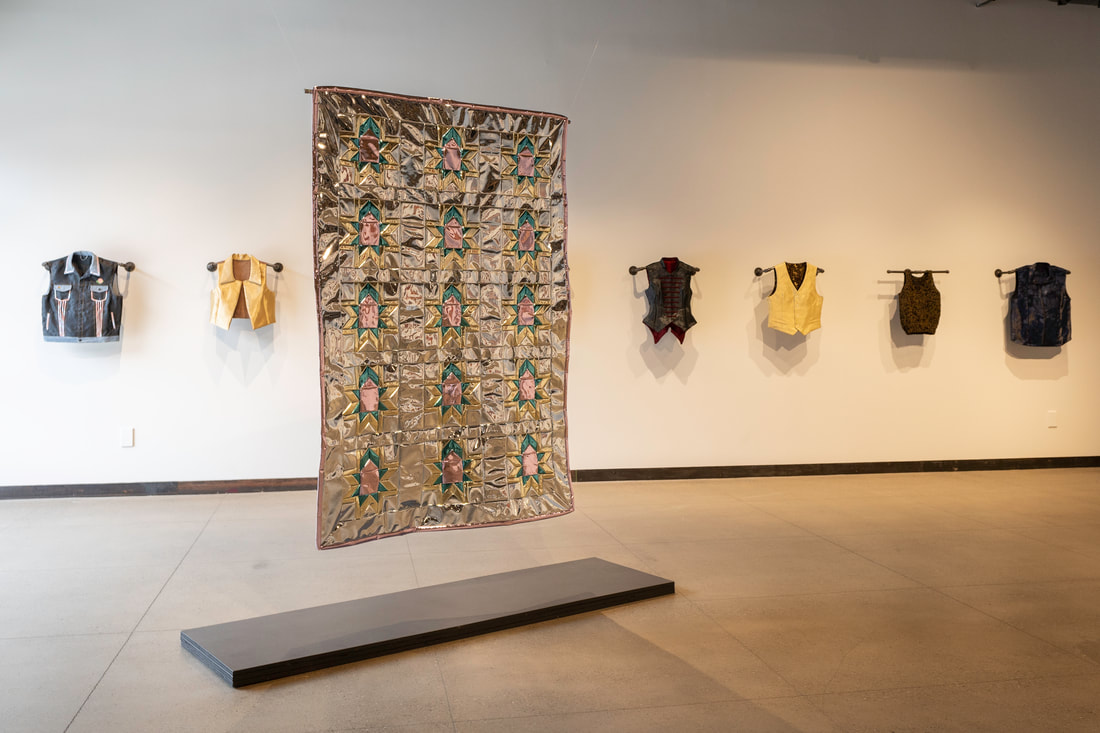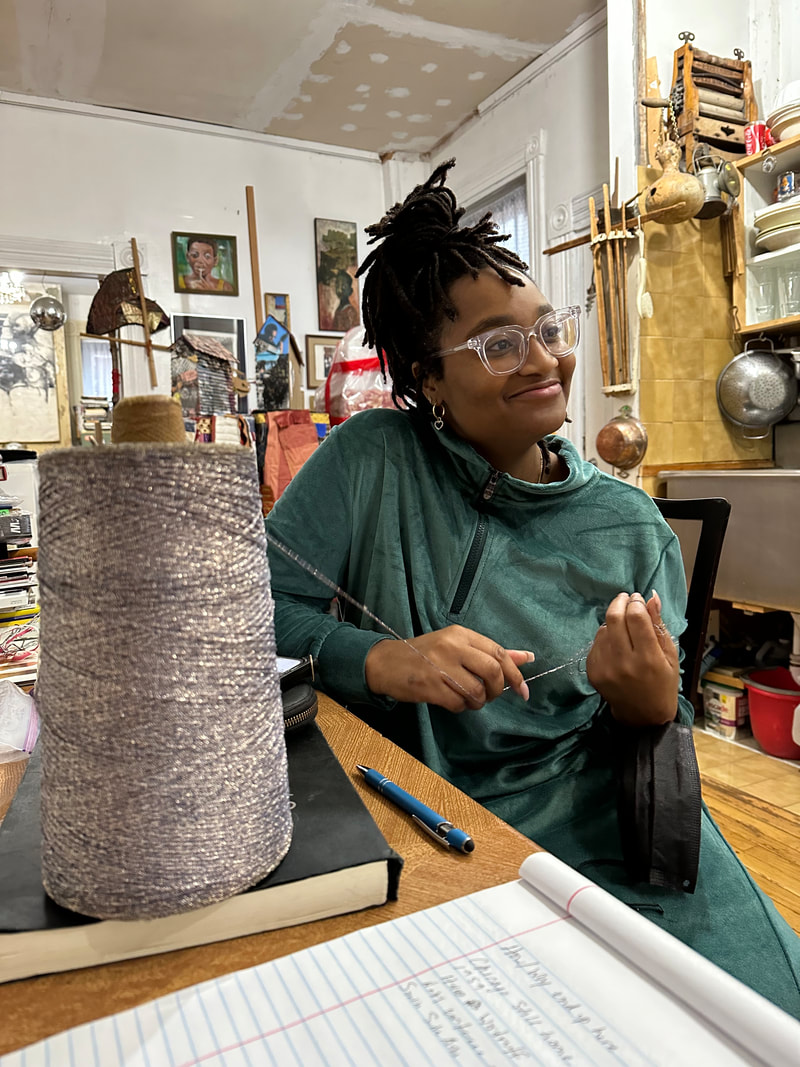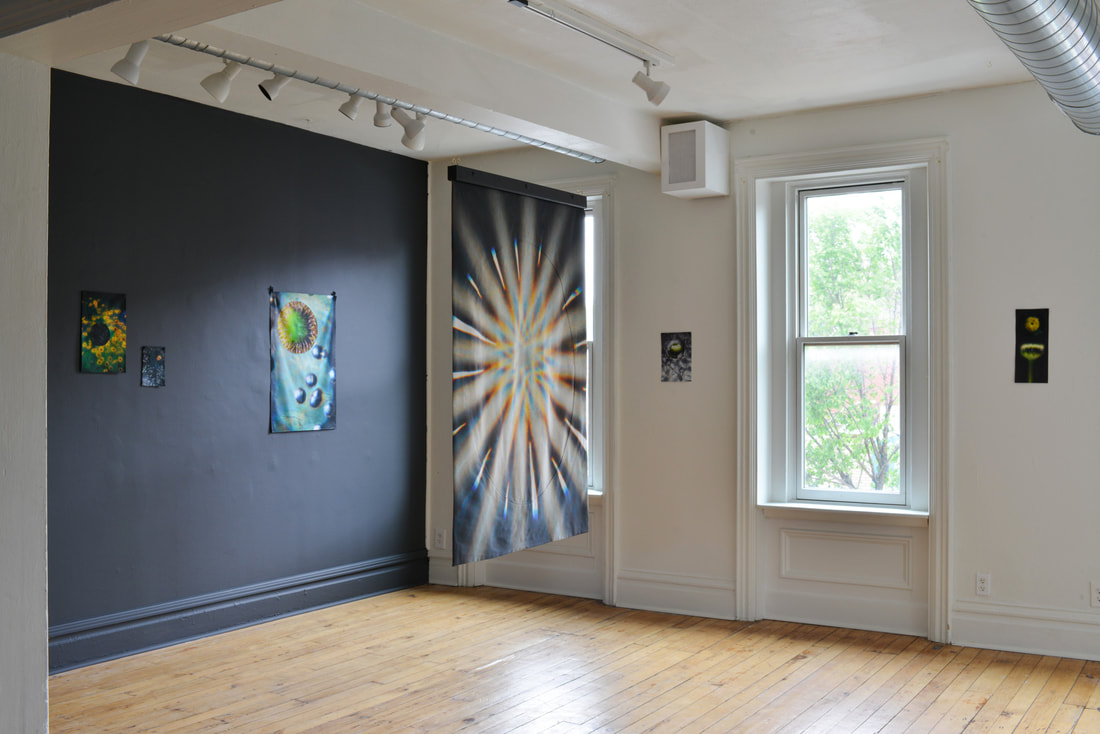2/22/23
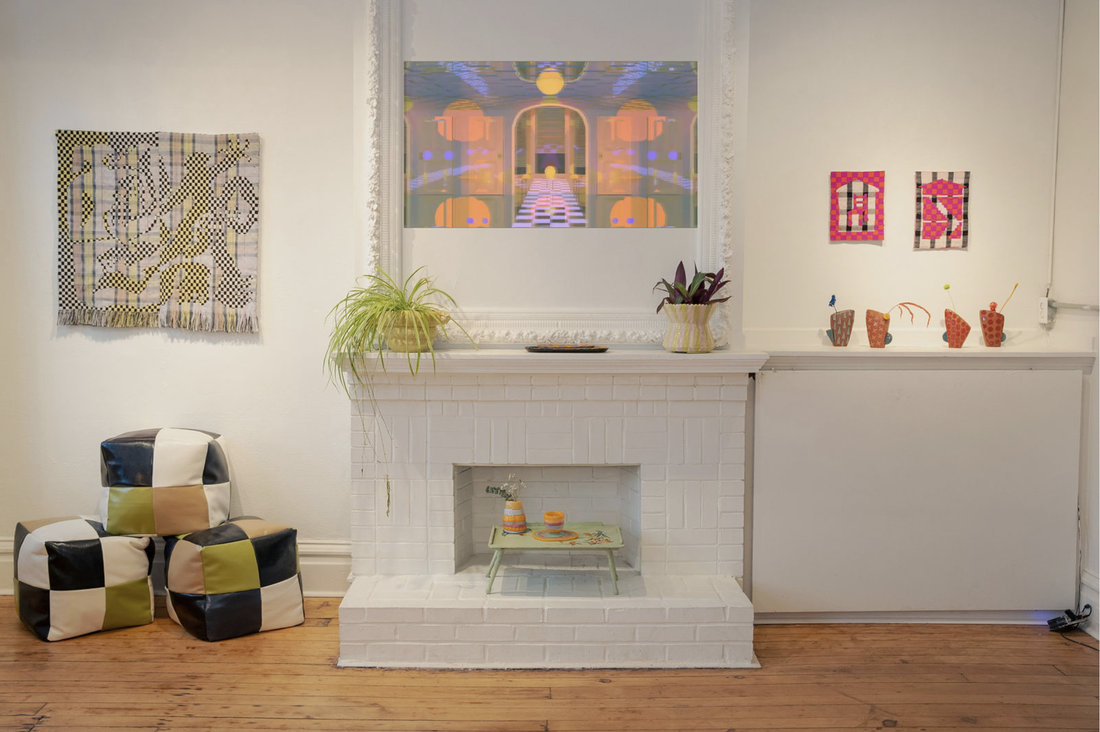
Installation view of Hot House at Bunker Projects
The views and opinions expressed in this article are solely those of the author. They do not reflect the opinions or views of Bunker Projects or its members. All images courtesy of Silver Eye.
Maximalism is back. Its return makes sense– in a present where everything from work to psychotherapy to high school graduations comes to us through sleek, silver machines that emit blue light into our eyes, maximalism is a return to a more visceral, more material, and simply more fun experience of life. Maybe it never left, but it certainly seemed in the late 2010s that the pared down nouveau riche fashion of Hypebeast and the perfectly organized kitchens of Muji were the aesthetic of the future. Where minimalism is subtle, modern, and slick, maximalism is bombastic, anachronistic, and kitschy. By 2020, though, we all had messy houses, and the world felt so devoid of color that nobody wanted to look at blobby, minimalist corporate murals or sets of gleaming steak knives on granite countertops.
Enter Eva Conrad’s 2023 group show Hot House at Bunker Projects. According to the Hot House exhibition page, the show features artists “whose work is part of the current resurgence of the pattern and decoration movement in response to the white washing minimalism of gentrification aesthetics.” The maximalism of Hot House is a nod to the “aesthetic of optimism that gestures back to traditionally more democratic forms of folk art and craft.” The very word folk in folk art implies a deeply felt sense of personhood, “folk” being not just an aesthetic but a synonym for “person.” Obviously, all art is made by people (barring the uncanny valley of AI “art” emerging into the culture), but folk art centers the communal aspects of artistic practice, hence its emphasis often on textile and ceramic, which by nature are more communal. In the sorts of gentrification-washed environments Conrad pushes back against, there’s a sense of objects being removed from their sources. On the mugs, rugs, and wall art of Hot House there are small cracks or pockmarks that show the human element of each work.
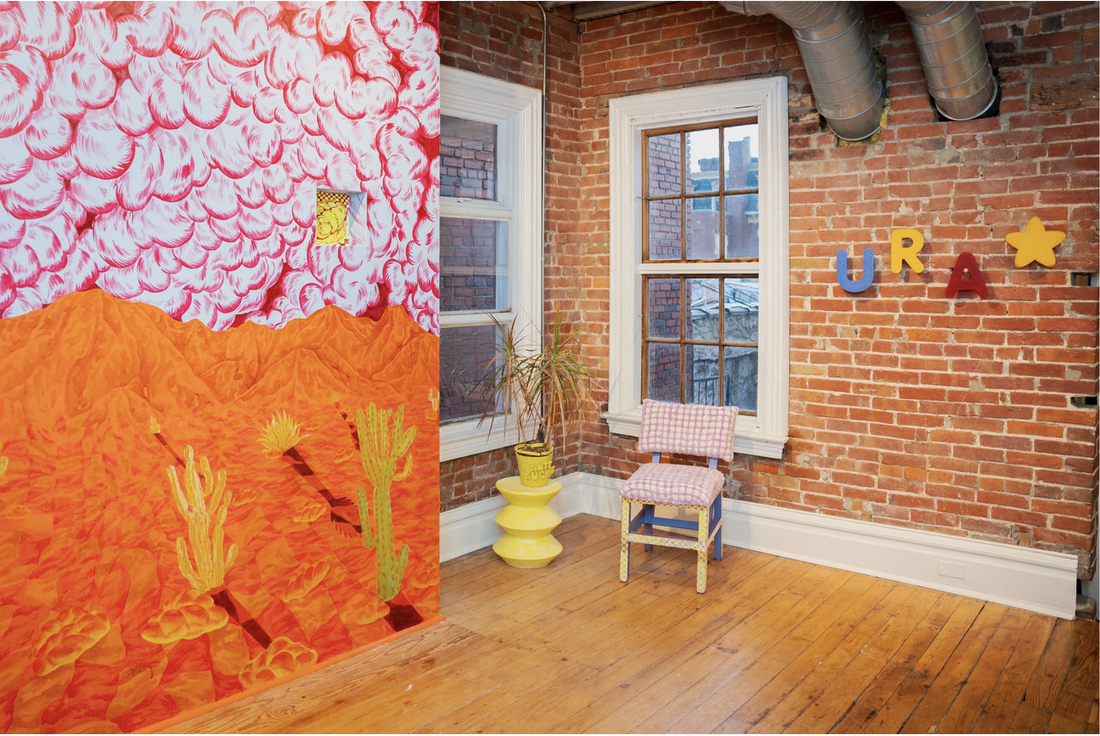
Rosabel Rosalind and Anna Azizzy, installation view at Bunker Projects
When you first walk into Hot House, you’re met with Rosabel Rosalind’s full-scale desert mural. While your eyes might gloss over the cacti at first, upon second glance you realize that the flora of this desert are whisks and other baking instruments. “The clouds in the piece actually came from another piece I was inspired to paint based on a pattern I saw in the swirls of some babka,” Rosalind said. Hands braiding challah interrupt the scene occasionally, on canvases which viewers can pull out from squares in the wall. In keeping with the humanistic theme of Hot House, Rosalind’s challah drawings quite literally show the hands that make an object for consumption. “It’s a nod to the miracle of manna,” Rosalind explained, referring to the story in the Hebrew Bible of the appearance of a bread-like substance in the desert at a time when the Israelites had run out of food. “I wanted to play with the idea that the world is God’s kitchen,” she said. It’s a striking entrance to the exhibition, a swirling miasma of oranges, reds, and yellows that takes the arid harshness of the desert and turns it into something lush and whimsical.
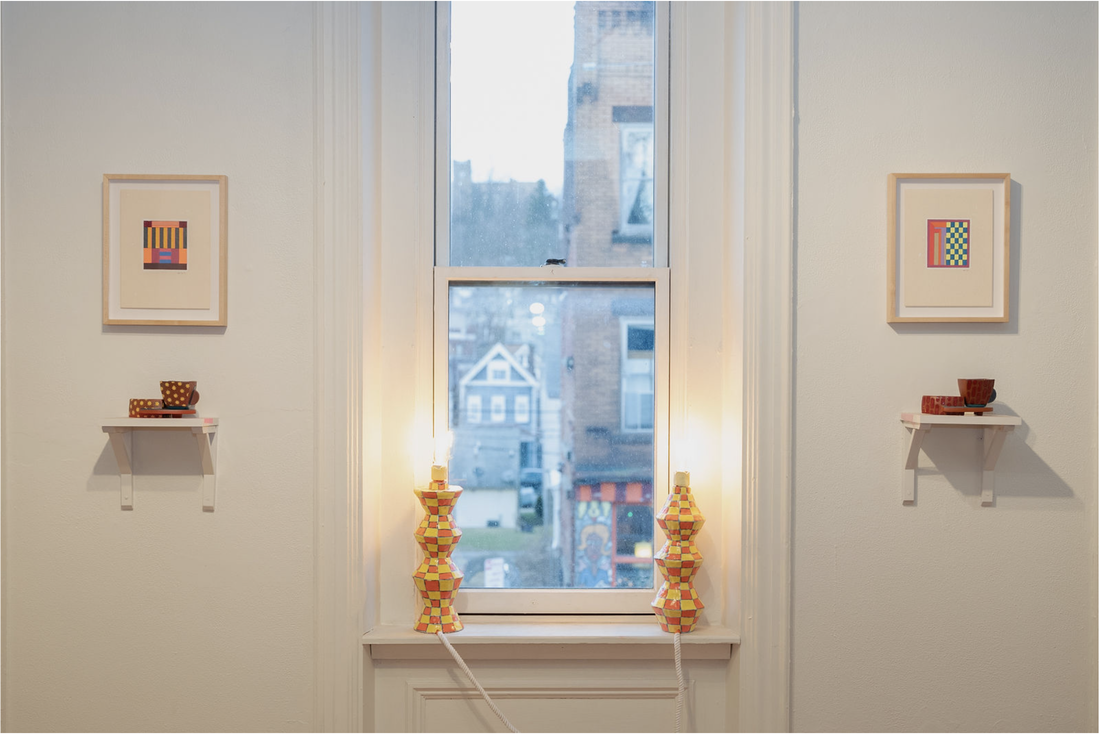
Zach Dorn, lamps (2023)
At the far window of Bunker’s exhibition space, Zach Dorn’s two light fixtures glimmer. Though the parallel was not intentional, Dorn’s pair of lights reminded me of the two Shabbat candles one might find at a table alongside the braided challah depicted by Rosalind. The Shabbat dinner table is a place where domestic objects are no longer just objects. The candles, challah, and wine instead take on a mystical quality. A Shabbat scene is also one of rest. Where minimalism is often optimized for productivity, the Shabbat table is one of mandated rest and spiritual restoration. Folk art, in a broader sense, has that quality of restoration and joy rather than optimization and productivity. Conrad’s vision for Hot House replaces frenetic optimization with playful optimism. At one point, I laid down on Anna Azizzy’s multi-material cushion that makes up the centerpiece of the room and stared at the work around me. Azizzy’s cushion is made up of a colorful mixture of fuzz, polyester, and the sort of turf one might find replacing grass on a playground.
The presence of AstroTurf speaks to the fact that the spiritual restoration portrayed by Conrad’s vision isn’t the Henry David Thoreau going-out-into-the-woods kind. Maximalism in fact, it is an unabashedly human and plasticky art form. The intersection of folk art and maximalism that Hot House inhabits is a celebratory tapestry of the human experience. The majority of the world we experience is of our own creation. Every building we pass by was designed by a human with a beating heart and firing neurons just like our own, each brick laid by another homo sapiens. Every billboard we pass on the street was visually composed by another human, another human being had to write the copy, another human being had to pose as a model for the car insurance or fast food or luxury cannabis being sold on the billboard, and yet another heads the company profiting off of the sale. In the stage of capitalism,, it’s easy to forget that we are little more than dolls in a dollhouse of our own making, while the trees and oceans remain older than we can process. Folk art and Pop art situate us into the Anthropocene and confront us with each other.
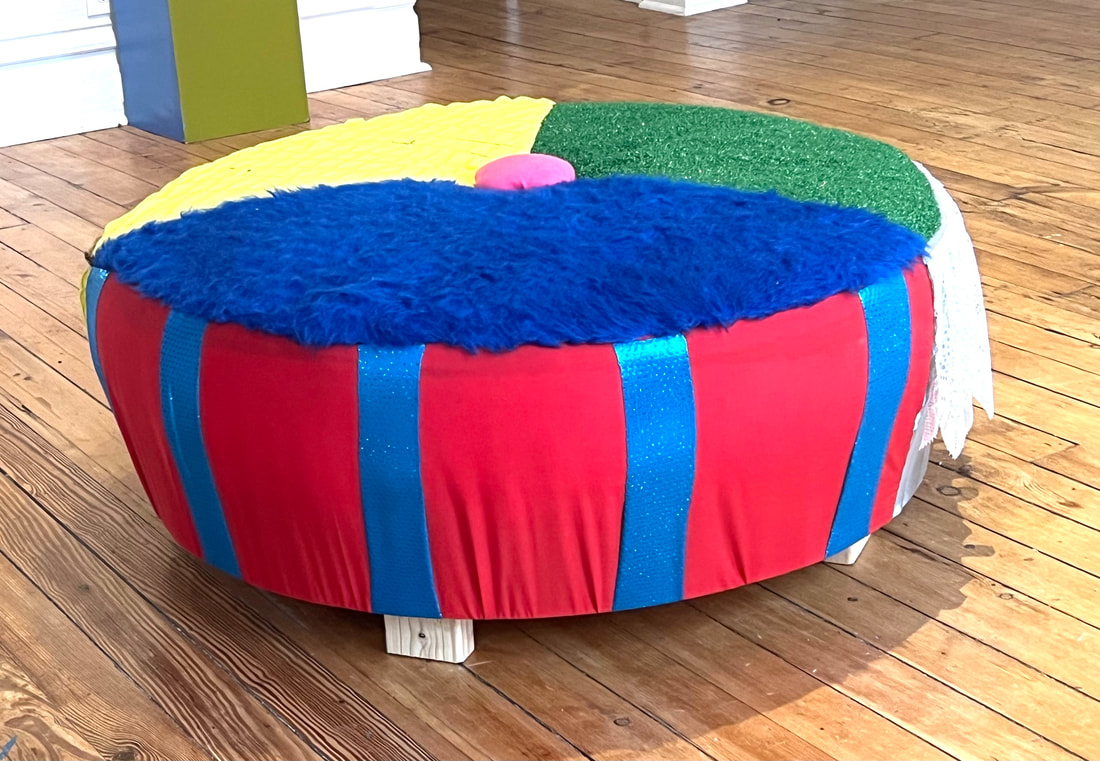
Anna Azizzy, ottoman, (2023)
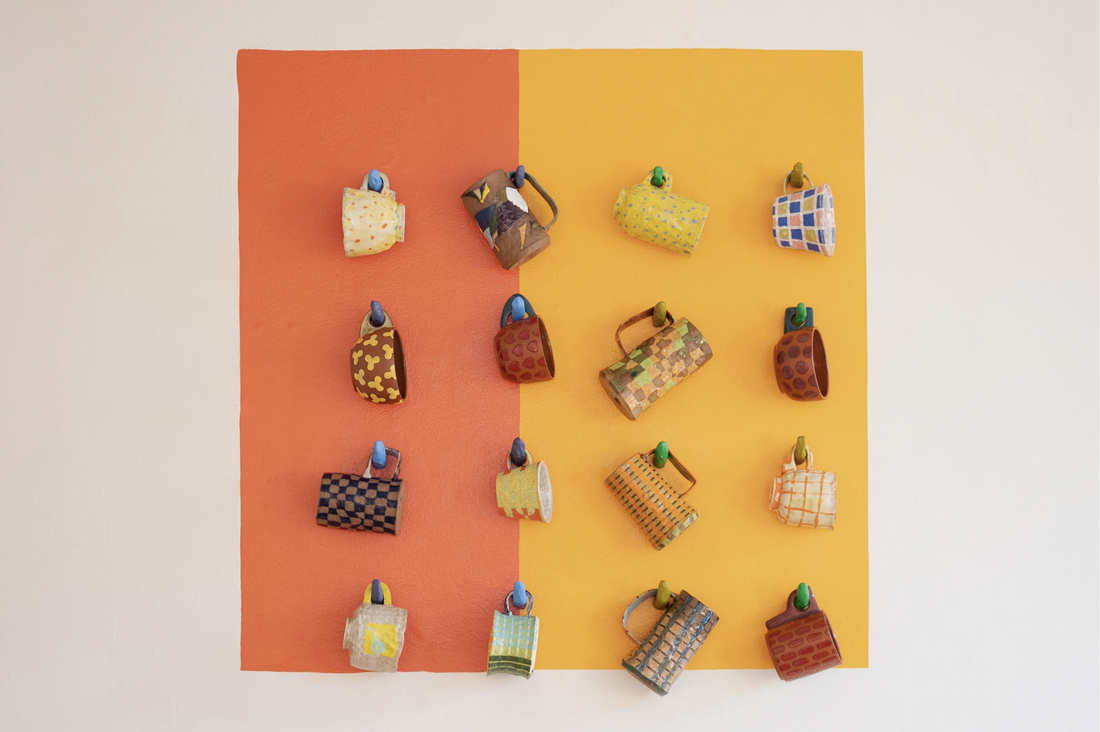
Various artists, mugs, installation view at Bunker Projects
It’s no coincidence then that one of the most prominent motifs in Hot House is the building block. Checkered patterns span every artist’s work, from Conrad’s mugs to Zach Dorn’s lamps to the cloth behind Rosabel Rosalind’s challah loaves. Bunker Review editor-in-chief Anna Mirzayan relayed to me that Conrad didn’t do this intentionally, but rather allowed the synergy to organically develop between the pieces. The color and pattern landscape of Hot House is one of oranges, lilacs, beiges, highlighter yellows, verdant greens, and spotted shadows. Checkers, stripes, spots, then checkers on top of stripes and stripes on top of checkers. But one of the most eye-catching pieces has no shape at all, though. Matt Zorn’s sculpture near the front of the exhibit is a globular peaked and valleyed structure colored in dark purple and orange. I found myself thinking that if there were a physical form for a shadow, Zorn’s sculpture would be it.
Shadow features prominently in the show, because, where shadow is an integral part of every object and every place, what Conrad calls “gentrification minimalism” cuts away the shadows in its design, A shadow is not the object itself, but the convergence of the sun, our eyes, and the object’s shape. As Conrad wrote themself: “No new idea is made until two stimuli are brought into relation with one another. This is why trusting feelings and chance on a moment to moment basis catalyzes creativity.” In one of Conrad’s own ceramic vases, a mirror beneath the piece reflects back the interior life the object might have beyond our first glance at it. In Molly Bernstein’s hanging cup, shadows on the wall are part of the experience of viewing the piece. The mugs themselves feel connected to the communal nature of sharing coffee and tea in a domestic space.
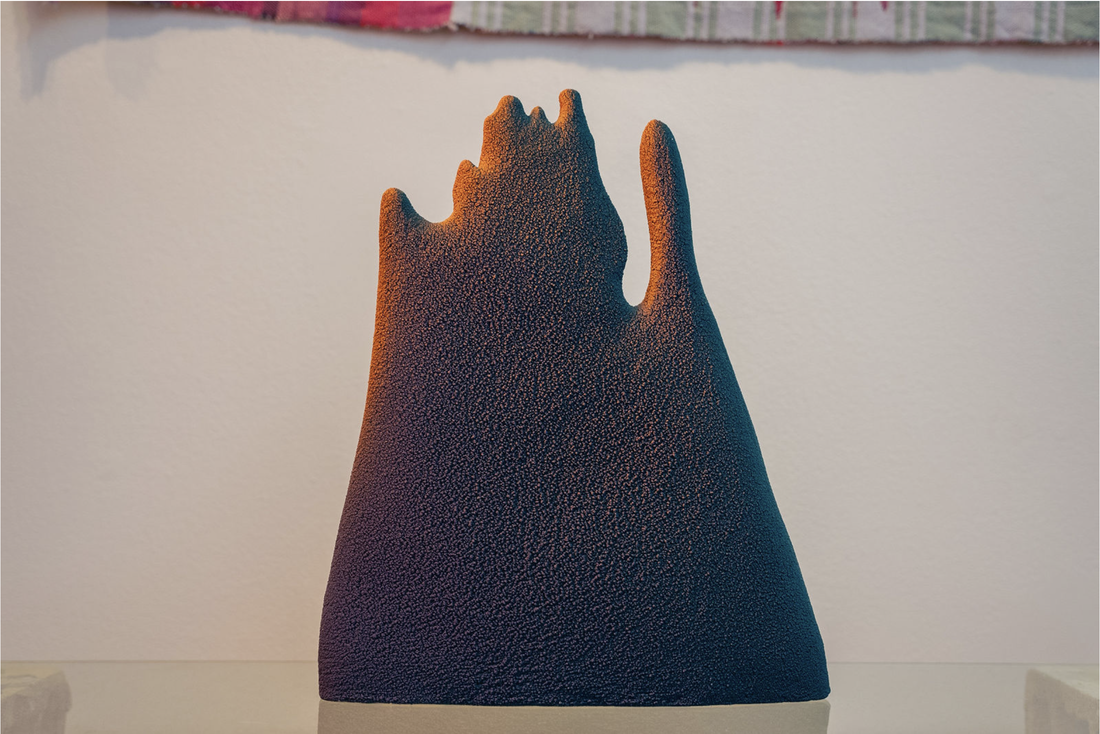
Matt Dorn, view at Bunker Projects.
Nothing in Hot House feels stagnant. The patterns undulate and there’s a sense of movement to all of the work. As semantic as it might sound, Hot House felt like a meditation on the concept of a “living room.” There’s something very heartening that in the English language we have a room in our home for no real purpose other than to “live” in. Conrad’s concept for Hot House serves as a reminder that to truly live means comfort with vibrant, sometimes confronting bursts of pattern and color. After all, the only house without shadows is a completely empty one.
Hot House was on view at Bunker Projects January 6th through February 3rd, 2023.
Emma Riva is the managing editor of UP, an international online and print magazine that covers the intersections of graffiti, street art and fine arts. She is also the author of Night Shift in Tamaqua, an illustrated novel set in the Lehigh Valley, and a contributor to Belt and Widewalls. More about her work can be found on her website and Instagram.
